When comparing Azure Container Instances (ACI), Azure Container Apps (ACA), and Azure Kubernetes Service (AKS), it’s important to consider factors such as ease of use, scalability, flexibility, complexity, and the specific use cases they are designed for.
Each of these services has its own strengths and is best suited to different types of workloads and container management needs.
Here’s a detailed comparison between ACI, ACA, and AKS.
Overview
Azure Container Instances (ACI)
ACI is a lightweight, serverless container solution that allows you to run containers without managing the underlying infrastructure.
You can deploy containers directly and scale them up or down on-demand.
It is ideal for short-lived workloads such as batch jobs, tasks, and quick deployments.
Azure Container Apps (ACA)
ACA is a serverless container platform built for running microservices, event-driven applications, and containerized workloads that need to scale dynamically based on traffic or events.
It abstracts away infrastructure management and is ideal for event-driven architectures and applications that need automatic scaling.
Azure Kubernetes Service (AKS)
AKS is a fully managed Kubernetes service that provides powerful orchestration for large-scale containerized applications.
It is ideal for applications that require more complex orchestration, microservices management, stateful workloads, or sophisticated networking between containers.
Key Features Comparison
| Feature/Service | ACI (Azure Container Instances) | ACA (Azure Container Apps) | AKS (Azure Kubernetes Service) |
|---|---|---|---|
| Deployment Complexity | Low: Just deploy a container. | Low: Fully managed, no infrastructure setup required. | High: Requires managing Kubernetes clusters and resources. |
| Infrastructure Management | None: Serverless, fully managed. | None: Fully serverless with no VM or Kubernetes management. | High: You manage the cluster nodes (worker nodes). |
| Scaling | Manual scaling, no auto-scaling based on load. | Auto-scaling based on HTTP requests or custom triggers. | Horizontal Pod Autoscaler (HPA), cluster auto-scaling. |
| Networking | Simple networking, supports VNet integration (private). | Private networking, supports VNet integration, and custom domains. | Advanced networking, private clusters, service meshes, etc. |
| Use Case | Short-lived, burst workloads (batch jobs, testing). | Microservices, APIs, event-driven apps, dynamic scaling. | Complex microservices, stateful applications, hybrid workloads. |
| Persistent Storage | Limited: Best for stateless containers. | Limited: External services like Azure Storage needed for stateful workloads. | Full support for persistent storage (e.g., Azure Disks, Azure Files). |
| Container Orchestration | None: Each container is independent. | Simplified orchestration for multi-container apps. | Full Kubernetes orchestration, including custom scheduling, and complex deployments. |
| Stateful Workloads | Not ideal (stateless by nature). | Not ideal for stateful apps without external services. | Ideal for both stateless and stateful apps with persistent storage. |
| Integration with Other Services | Basic (Azure Storage, Event Grid, etc.). | Strong integration with Azure Logic Apps, Event Grid, Key Vault, and other Azure services. | Deep integration with Azure services like Azure Monitor, DevOps, and others. |
| CI/CD Support | Can integrate with CI/CD pipelines (e.g., Azure DevOps). | Full CI/CD integration with GitHub Actions, Azure DevOps. | Advanced CI/CD support with Kubernetes-native tools (Helm, Argo, etc.). |
| Cost Model | Pay-per-use based on CPU and memory consumption. | Pay-per-use, serverless pricing (per-second usage). | Pay-per-node (VMs) and resources, can be expensive for large clusters. |
Use Cases and Best Fit
| Use Case | ACI | ACA | AKS |
|---|---|---|---|
| Microservices | Not suitable due to lack of orchestration and scaling features. | Best for lightweight microservices, especially when scaling needs vary dynamically. | Best for complex microservices requiring advanced orchestration, service discovery, and scaling. |
| Batch Processing | Ideal for running short-lived, isolated container tasks (e.g., data processing). | Not ideal (use ACI instead). | Ideal for large-scale, complex batch processing workloads where containers need to run continuously. |
| Event-driven Applications | Suitable for small event-driven workloads (e.g., background jobs). | Best for scalable, event-driven applications with automatic scaling based on events (e.g., queues, HTTP requests). | Suitable for large, event-driven applications but requires more configuration. |
| Web Apps & APIs | Limited: Best for small, isolated APIs. | Best for containerized web apps or APIs that need scaling based on traffic (HTTP). | Suitable for large web apps and APIs requiring fine-tuned orchestration, scaling, and service communication. |
| Stateful Applications | Not ideal for persistent storage. | Not ideal for stateful workloads, requires external services. | Best for stateful apps (using persistent storage like Azure Disks). |
| Development/Testing | Ideal for quick, isolated tests or short-term deployments. | Best for staging, development, or testing lightweight microservices. | Ideal for complex app development and testing with integrated orchestration and persistent storage. |
| Complex Deployments & Orchestration | Not suitable due to lack of orchestration. | Simplified orchestration for microservices, but lacks the complexity of Kubernetes. | Best for complex deployments requiring advanced orchestration, load balancing, and service discovery. |
Pros and Cons
Azure Container Instances (ACI)
Pros
Simplicity: Extremely easy to deploy and run containers without worrying about infrastructure or orchestration.
Cost-effective: Pay-per-use, great for short-lived and on-demand workloads.
No infrastructure management: Fully managed by Azure.
Quick start: Ideal for rapid testing, dev environments, and lightweight workloads.
Cons
Limited orchestration: No advanced container orchestration features (like service discovery, auto-scaling).
Manual scaling: Lacks automatic scaling based on load or events.
Limited support for stateful workloads: Not ideal for applications requiring persistent storage.
Azure Container Apps (ACA)
Pros
Serverless: Fully managed with automatic scaling based on traffic or events.
Event-driven: Seamless integration with Azure Event Grid, Logic Apps, and other services.
Simplified microservices deployment: Supports multiple containers in a single app, simplifying microservice deployments.
Great for dynamic workloads: Automatically adjusts to traffic spikes.
Cons
Limited control: Less flexibility compared to AKS in terms of customization.
Limited advanced orchestration: Lacks Kubernetes-level orchestration capabilities like custom scheduling, affinity, etc.
Storage limitations: Persistent storage options are limited; you need external services for stateful workloads.
Azure Kubernetes Service (AKS)
Pros
Complete control: Full flexibility for complex microservices and containerized applications with advanced orchestration.
Enterprise-grade: Ideal for large-scale, production-level apps.
Advanced scaling: Supports automatic scaling of both pods and clusters.
Integrated DevOps tools: Great CI/CD support, including Helm, ArgoCD, etc.
Persistent storage: Fully supports persistent storage options.
Cons
High complexity: Steeper learning curve due to Kubernetes’ complexity.
Infrastructure management: While Azure manages the master nodes, you still need to manage worker nodes and clusters.
Cost: Potentially more expensive, especially for large-scale, always-on applications.
Overkill for simple applications: Requires significant overhead for small or simple workloads.
Cost Comparison
ACI: Pay-per-use model. Charges are based on CPU and memory consumption while the container is running. Best suited for short, bursty workloads or testing.
ACA: Also uses a pay-per-use, serverless pricing model where you pay for the CPU and memory consumed during container execution. Since it’s event-driven, it’s cheaper for sporadic workloads.
AKS: Pay for VMs, storage, and other resources (including network traffic and persistent storage). While AKS can be cost-effective for larger, long-running applications, it might incur higher costs for smaller, less complex workloads due to VM and Kubernetes cluster management overhead.
Quick Comparison
| Feature | ACI (Azure Container Instances) | ACA (Azure Container Apps) | AKS (Azure Kubernetes Service) |
|---|---|---|---|
| Complexity | Low (simplest container solution) | Low (fully managed, serverless) | High (requires Kubernetes knowledge and management) |
| Scaling | Manual scaling | Auto-scaling (based on traffic/events) | Auto-scaling (pods and clusters) |
| Stateful Applications | Not ideal (stateless only) | Not ideal (needs external storage) | Best suited (with persistent storage) |
| Networking | Basic (VNet integration available) | Advanced (VNet, custom domains, and event-driven networking) | Advanced (Kubernetes networking features, service meshes) |
| Best Use Cases | Short-lived, batch jobs, isolated tasks | Microservices, event-driven apps, dynamic scaling | Large-scale apps, microservices, hybrid cloud architectures |
| Cost | Pay-per-use (cheap for bursty workloads) | Pay-per-use (cost-effective for event-driven apps) | Pay-per-node (cost-effective for large-scale, complex apps) |
Summary
ACI is best for quick, isolated workloads, batch processing, or testing when you need simplicity without the overhead of managing infrastructure.
ACA is great for serverless microservices, event-driven applications, and dynamic scaling without the complexity of Kubernetes.
AKS is best for complex, large-scale applications that require advanced orchestration, stateful workloads, and fine-grained control over containerized environments.


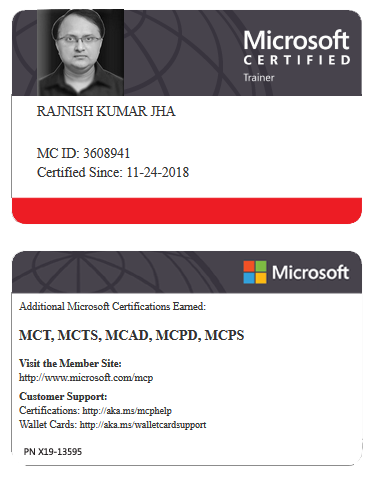
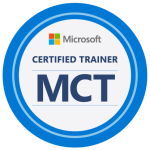
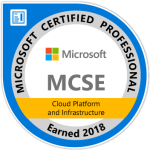
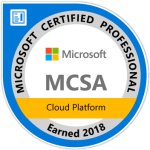
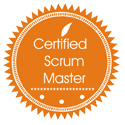



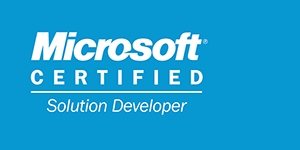


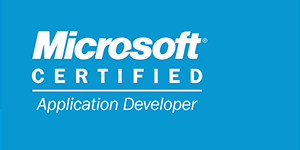






Leave a Reply